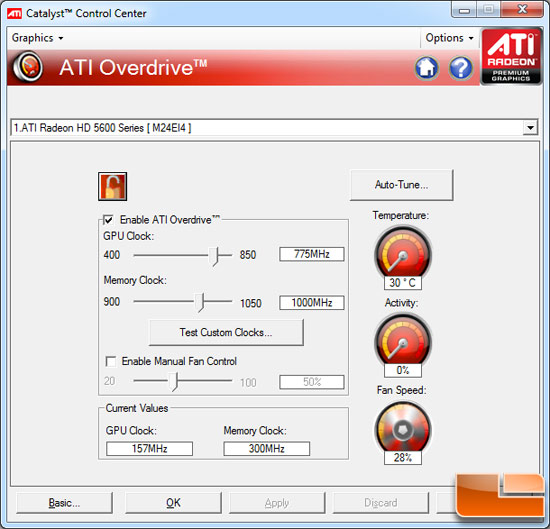Radeon HD 5670 Overclocking

To overclock the Sapphire Radeon HD 5670 1GB graphics card, we used the ATIOverdrive utility that is part of the CATALYST Control Center. When you'unlock' the ATI Overdrive, you can manually set the clock and memorysettings or let the 'auto-tune' utility set the frequencies for you.

Just for fun, we tried out the auto-tune feature to see if it couldreally find a stable clock configuration, and it worked in just a fewminutes and did not lock up the system. This utility determines thehighest core and memory clock frequency that is stable and shows youwhat the GPU temperature is and how much load the GPU is under duringtesting. We started out at the default settings of 775MHz on the coreand 1000MHz on the memory, but were able to reach 840MHz on the core and1040MHz on the GDDR5 memory. This is a 65MHz overclock on the coreand a 40MHz boost on the GDDR5 memory ICs.
To test out the overclock we fired up 3DMark Vantage and manuallyset the fans at 100% just to be sure heat wasn't an issue whenbenchmarking at this overclock.
The Sapphire Radeon HD 5670 Video Card Overclocked 725MHz/1000MHz:

Running 3DMark Vantage with the Extreme preset we got ascore of X2251. The score went up X2511 3DMarks when overclocked,which was an improvement of 260 3DMarks or 11.6% with this mildoverclock. Both the ATI Radeon HD 5670 512MB and the Sapphire Radeon HD 5670 1GB graphics cards had the same overclock, so we can assume that this overclock will be easily reached by all.


